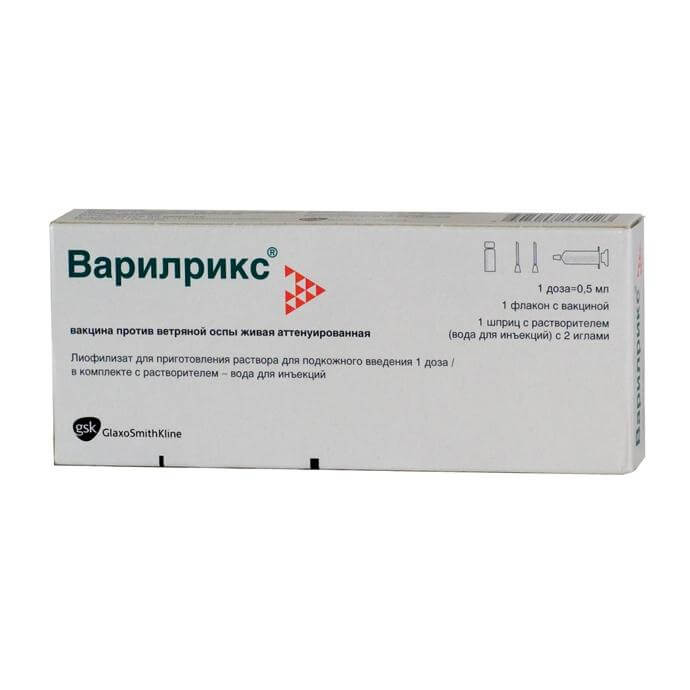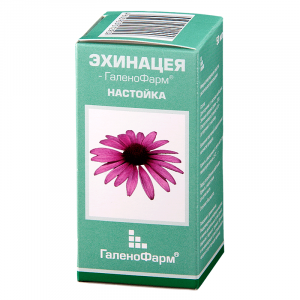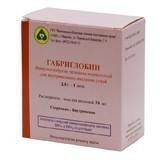Description
Release form
lyophilisate for the preparation of a solution for subcutaneous administration 1 dose / complete with a solvent – water for injection
Indications
Prevention of chickenpox from 12 months, primarily in people who are at high risk, have not had chickenpox and have not been vaccinated before.
Emergency prevention of chickenpox in people who have not had chickenpox and have not been vaccinated before, who were in close contact with people with chickenpox (family members, doctors, nursing staff and other medical personnel, as well as others).
Contraindications
Hypersensitivity to any component of the vaccine, including neomycin, hypersensitivity symptoms to previous administration of Varilrix ® vaccine.
Primary or acquired immunodeficiency (developed due to leukemia, lymphoma, blood dysrasia, clinical manifestations of HIV infection, the use of immunosuppressants, including high-dose corticosteroid therapy), determined by the number of lymphocytes – less than 1200 lymphocytes / mm3, as well as in the presence of other signs of cellular immunodeficiency.
Acute infectious and non-infectious diseases, exacerbation of chronic diseases are temporary contraindications for vaccinations in mild acute respiratory viral infections, acute intestinal diseases vaccinations are carried out immediately after normalization of temperature.
Pregnancy or planned pregnancy for three months. The period of breastfeeding.
Cautions
As with the parenteral administration of any other vaccine, everything should be in place to stop a possible anaphylactic reaction to the Varilrix ® vaccine. The vaccinated should be under medical supervision for 30 minutes after immunization.
Adequate contraceptive measures should be taken within three months after Varilrix vaccination.
In the presence of primary or acquired immunodeficiency, it is necessary to determine the number of lymphocytes in mm.
The Varilrix ® vaccine should not be administered intradermally and should not be given intravenously.
Patients who receive massive immunosuppressive therapy may develop clinical chickenpox after vaccination.
Special instructions
As with other injectable vaccines, the injection of adrenaline should always be on hand during the administration of this vaccine in case of an anaphylactic reaction. The vaccinated should remain under the supervision of a healthcare professional for 30 minutes after vaccination.
In extremely rare cases, transmission of the vaccine virus has been reported. Therefore, vaccinated individuals should avoid contact with pregnant women, as they are especially susceptible to chickenpox (mainly during the first trimester of pregnancy), as well as those at high risk for severe chickenpox (for example, patients with leukemia or receiving treatment immunosuppressants).
In cases where it is not possible to prevent contact with the above individuals, the potential risk of transmitting the vaccine virus should be weighed and compared with the risk of contracting and transmitting the natural varicella virus.
vaccinated
In extremely rare cases, transmission of the vaccine virus has been reported. Therefore, vaccinated individuals should avoid contact with pregnant women, as they are especially susceptible to chickenpox (mainly during the first trimester of pregnancy), as well as those at high risk for severe chickenpox (for example, patients with leukemia or receiving treatment immunosuppressants).
In cases where it is not possible to prevent contact with the above individuals, the potential risk of transmitting the vaccine virus should be weighed and compared with the risk of contracting and transmitting the natural varicella virus.
vaccinated
In extremely rare cases, transmission of the vaccine virus has been reported. Therefore, vaccinated individuals should avoid contact with pregnant women, as they are especially susceptible to chickenpox (mainly during the first trimester of pregnancy), as well as those at high risk for severe chickenpox (for example, patients with leukemia or receiving treatment immunosuppressants).
In cases where it is not possible to prevent contact with the above individuals, the potential risk of transmitting the vaccine virus should be weighed and compared with the risk of contracting and transmitting the natural varicella virus.
vaccinated since they are especially sensitive to chickenpox (mainly during the first trimester of pregnancy), as well as with people at high risk for severe chickenpox (for example, patients with leukemia or immunosuppressive treatment).
In cases where it is not possible to prevent contact with the above individuals, the potential risk of transmitting the vaccine virus should be weighed and compared with the risk of contracting and transmitting the natural varicella virus.
vaccinated since they are especially sensitive to chickenpox (mainly during the first trimester of pregnancy), as well as with people at high risk for severe chickenpox (for example, patients with leukemia or immunosuppressive treatment).
In cases where it is not possible to prevent contact with the above individuals, the potential risk of transmitting the vaccine virus should be weighed and compared with the risk of contracting and transmitting the natural varicella virus.
vaccinated the potential risk of transmitting the vaccine virus should be weighed and compared with the risk of contracting and transmitting the natural chickenpox virus.
vaccinated the potential risk of transmitting the vaccine virus should be weighed and compared with the risk of contracting and transmitting the natural chickenpox virus.
vaccinatedPatients with rashes within 3 weeks after vaccination should exclude any contact with pregnant women (especially during the first trimester of pregnancy) and immunodeficiency conditions.
INFLUENCE ON ABILITY ABILITY TO CONCENTRATE ATTENTION
Unlikely.
Composition of
Varillrix is a live attenuated varicella prophylaxis vaccine, which is a live attenuated Varicella Zoster virus (Oka strain) obtained by multiplying the virus in MRC-5 human diploid cell culture.
Specific activity of at least 3.3 lg PFU / 0.5 ml.
Excipients:
human serum albumin,
neomycin sulfate,
lactose,
sorbitol,
mannitol,
amino acids.
Solvent: d / i water – 0.5 ml.
Dosage and Administration
Dosage and Administration
Varilrix ® vaccine is intended for subcutaneous administration.
To prepare the injection solution, transfer the contents of the ampoule or syringe with the solvent to the vial with the lyophilisate, shake the suspension well until the lyophilisate is completely dissolved (approximately 3 minutes), then fill it into the syringe again.
The prepared solution is transparent from yellow-pink to pink in color, without precipitate and visible impurities.
Before administering the vaccine, the contents should be inspected for foreign particles and changes in appearance. If there are any abnormalities in the vaccine, then such packaging must be destroyed. After treating the injection site with alcohol or another substance used for disinfection, you should wait until this substance evaporates, since inactivation of the vaccine virus can occur upon contact with such compounds. The vaccine should be administered immediately after dilution with a solvent.
vaccination regimens Children 12 months to 13 years of age: 1 dose of the vaccine (0.5 ml) once.
Persons over 13 years of age (including those with high-risk groups and patients): 1 dose (0.5 ml) twice with an interval between administrations of 6-10 weeks.
Vaccination of high-risk groups
Patients with acute leukemia, patients with severe chronic illnesses, and patients receiving immunosuppressant therapy and radiation therapy. Immunization of such patients is carried out in a state of complete hematological remission of the underlying disease. In this case, it is necessary to make sure that the total number of lymphocytes is at least 1200 / mm3, and there are no symptoms indicating a lack of cellular immunity.
If you plan to vaccinate patients in the acute phase of leukemia, you must interrupt chemotherapy for a period of one week before and one week after vaccination. Do not vaccinate during periods of radiation therapy.
Patients who are planning to undergo organ transplantation
If patients are to undergo organ transplantation (eg, kidney), vaccination should be carried out several weeks before the start of immunosuppressive therapy.
Emergency prophylaxis
Vaccination is carried out once with 1 dose of vaccine (0, 5 ml) during the first 96 hours after contact (preferably during the first 72 hours).
Side effects
Healthy faces.
The vaccine safety profile is based on data received for 5369 doses of the vaccine administered to children, adolescents and adults. Reactions were recorded within 42 days after
vaccination. The frequency of reactions was determined as follows:
Very often:? 10%
Often:? 1% and <10% Sometimes:? 0.1% and <1% Rarely:? 0.01% and < 0.1% Very rare: <0.01% Infections Sometimes: upper respiratory tract infections, pharyngitis From the hemopoietic system and lymphatic system Sometimes: lymphadenopathy Mental disorders Sometimes: irritability From the nervous system pain, drowsiness From the side of the organs of vision Rarely: conjoy tivit part of the respiratory system and mediastinum Sometimes: rhinitis, cough part of the digestive system sometimes diarrhea, vomiting Rarely: abdominal pain, diarrhea From the skin and soft tissue Often: rash similar to rashes with chickenpox, pruritis Rarely: urticaria From the musculoskeletal and srd : arthralgia, myalgia On the part of the body as a whole and local reactions: Very often: pain and redness at the injection site, Often: swelling at the injection site, fever (rectal? 38 ° C axilla / oral cavity:> 37.5 ° C)
Sometimes: fever (rect ? 39.5 ° C axillary cavity / oral cavity: 39 39 ° C), weakness, malaise
When monitoring the massive use of the vaccine, reactions and symptoms were reported that were regarded as temporarily associated diarrhea
From the skin and soft tissue
Often: rash
Sometimes: rash similar to rashes with chickenpox, pruritus
Rarely: urticaria
From the musculoskeletal system and connective tissue
Sometimes: arthralgia, myalgia general and local reactions:
Very often: pain and redness at the injection site,
Often: swelling at the injection site, fever (rectal? 38 ° C axilla / oral cavity:> 37.5 ° C)
Sometimes: fever (rectal ? 39.5 ° C axilla / oral polo be:? 39 ° C), fatigue, malaise
In observing the massive use of the vaccine have been reports of reactions and symptoms, regarded as temporarily associating diarrhea
From the skin and soft tissue
Often: rash
Sometimes: rash similar to rashes with chickenpox, pruritus
Rarely: urticaria
From the musculoskeletal system and connective tissue
Sometimes: arthralgia, myalgia general and local reactions:
Very often: pain and redness at the injection site,
Often: swelling at the injection site, fever (rectal? 38 ° C axilla / oral cavity:> 37.5 ° C)
Sometimes: fever (rectal ? 39.5 ° C axilla / oral polo be:? 39 ° C), fatigue, malaise
In observing the massive use of the vaccine have been reports of reactions and symptoms, regarded as temporarily associating similar to rashes with chickenpox, pruritus
Rarely: urticaria
From the musculoskeletal system and connective tissue
Sometimes: arthralgia, myalgia
From the body as a whole and local reactions:
Very often: pain and redness at the injection site, srdlp Often: swelling at the injection site, fever (rectal? 38 ° C axillary cavity / oral cavity:> 37.5 ° C)
Sometimes: fever (rectal? 39.5 ° C axillary cavity / oral cavity:? 39 ° C), weakness , malaise
When observing mass use vaccines received reports of reactions and symptoms, regarded as temporarily associated similar to rashes with chickenpox, pruritus
Rarely: urticaria
From the musculoskeletal system and connective tissue
Sometimes: arthralgia, myalgia
From the body as a whole and local reactions:
Very often: pain and redness at the injection site, srdlp Often: swelling at the injection site, fever (rectal? 38 ° C axilla / oral cavity:> 37.5 ° C)
Sometimes: fever (rectal? 39.5 ° C axilla / oral cavity:? 39 ° C), weakness , malaise
When observing mass use vaccines received reports of reactions and symptoms, regarded as temporarily associatedOther (not necessarily related) vaccinations:
infections caused by Herpes zoster
from the immune system
hypersensitivity reactions, allergic reactions (including anaphylactic and anaphylactoid reactions)
from the nervous system
Convulsions, ataxia, ataxia dose (revaccination) does not exceed the reactogenicity of the first dose. There were also no differences in the vaccine safety profile in seronegative and seropositive subjects.
High-risk patients
Reactions at the injection site are usually mild.
A papular-vesicular rash, in rare cases accompanied by mild or moderate fever, may occur from a few days to several weeks after vaccination.
Drug interaction
Varilrix vaccine administration is possible no earlier than three months after immunoglobulin administration or after blood transfusion.
Salicylates should be avoided for 6 weeks after varilrix vaccination, since there were separate reports of the development of Reye’s syndrome in the presence of chickenpox virus infection.
The vaccine can be administered simultaneously with inactivated vaccines of the national calendar of preventive vaccinations of the Russian Federation and the vaccination calendar for epidemiological indications of the Russian Federation, with the exception of the rabies vaccine.
The simultaneous administration of the Varilrix vaccine with the measles-rubella-mumps vaccine or with the diphtheria-tetanus-pertussis vaccine does not reduce the immune response and does not increase the reactogenicity of the varilrix vaccine
The combined measles-rubella-mumps vaccine and the chickenpox vaccine can be administered simultaneously introducing them to different places. However, if these vaccines were not prescribed at the same time, then the interval between their appointment to achieve the maximum level of antibodies should be at least 30 days.
Between vaccinations with Varilrix and other vaccines, in addition to the above, the interval between administrations should be at least one month. When conducting simultaneous vaccinations with several drugs, contraindications to each of the vaccines used must be taken into account.
All vaccines are given with different syringes at different injection sites.
High-risk patients
Varillrix should not be given at the same time as other live attenuated vaccines. However, other vaccines for administration in the form of injections should be administered in different places.
Overdose
Separate reports of accidental overdose of the vaccine have been reported.
Some reports have included descriptions of symptoms such as lethargy, cramps.
Storage conditions
At a temperature of 2 to 8 ° C.
The Expiration of the
vaccine lyophilisate is 2 years, the solvent is 5 years.
Deystvuyuschee substances
Vaccine for Prevention vetryanoy osp
pd150747pf7pf7141 from
pharmacies Prescription
Form of Treatment
simply entails dlya inaektsiy
SmithKline Beechem-Biomed, UK




